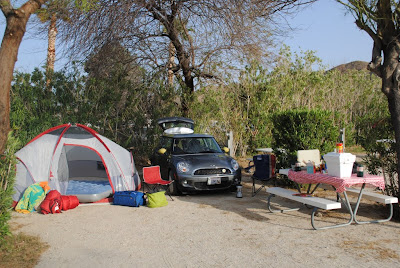“I guarantee it”
Gasoline prices will rise now that we have passed peak oil, pushed higher by 3 billion new consumers in China, India and the Middle East, pushed higher by increasing governmental regulations and the public’s desire for cleaner less polluted air. Billions of new consumers hunger for the same quality of life and quantity of consumption as 600 million Americans and Europeans. A quality of life fueled by the energy dense miracle of prehistoric composition, oil.
Decreasing supply, a five fold increase in consumption, a stricter regulatory environment… you can draw your own conclusion on what the price of gasoline will be in the future, say nothing about inflation.
Solar P.V. prices are dropping (have been dropping since their begining in the 50’s.) Currently in Southern California a residential installation will run about $3.75 to $4.25 per kw of Solar P.V. net cost. A 5kw P.V. system will net cost the owner between $18,000 and $22,000. Each kw of solar P.V. will produce 1600KWH of annual energy in Southern California, more on that later.
I have driven 24,000 miles in the past 19 months in Mini-E #183. An electric car driven by electrons produced 100% by solar energy. I consider it nothing short of amazing, incredibly fun to drive, it has transformed my life and my energy, transportation beliefs.
My Mini-E drives 3.5 miles per KWH. Using the national average of 12,000 mile a year, I need to generate 3500 KWH a year to “fuel” the Mini-E. This requires a 2.2 kw Solar P.V. system, (remember the 1600kwh per year?) however because of my TOU (time of use) rate structure, I get paid 29 cents a KWH during the peak hour when I am producing electricity and I get charged at night a cost of 14 cents per KWH. This is essentially 2 for the price of one. To make a long story short based on our SDG&E TOU rate structure and actual experience over two years, a system that is 1.65 KWH that generates 2640 peak hour KWH will provide 3500KWH of off peak electricity.
About the graphs:
The Solar P.V. chart is my actual cost, adding an additional inverter in year 15. I choose 25 years as that is the warranted period of the solar PV system. It will degrade slightly over that time this is true, but it will also provide electricity far past it’s 25 year warranty. All the charts depict 12,000 miles of driving. The gas charts use the U.S. fleet average for cars of 20mpg with the first year cost of fuel at $3.50 a gallon for 600 gallons. Your mileage or annual driving numbers may be much higher or lower but that is the fleet average. Electricity prices vary far more than gasoline so make sure to check out your own unique situation.
The gas charts are at 5% and 7.5% annual increase. The past 25 years gas has increased at 3.5% this would be about $84,000 in total cost. What do you think gas prices will do? 5% to 7.5% is my best guess.
I have driven for 32 years and up until the Mini-E, I purchased gas. It is my conclusion that the electric car is already cheaper than the gas car to own and operate for many areas of our country that are renewable energy based such as the Pacific Northwest, or for those such as I, that produce their own energy. I also believe that the electric car if adopted in mass quantities can clean our air and end our dependence on foreign oil.
Of special note is that the total cost of the solar P.V. system required to drive an electric car 12,000 miles a year for over 25 years, is less than the cost of buying gasoline for four years for a gasoline powered car.
Again, in the words of the Men’s Warehouse tailor, You will be buying fuel for your car for the next 25 years “I guarantee it”
The question is what type of fuel will you buy for what type of car?
Solar is $0.35 cents a gallon fixed in price forever.
It's a new world America!
Cheers
Peder



















































